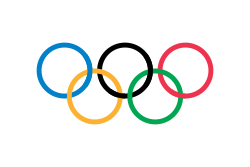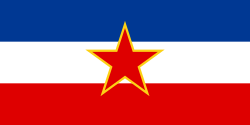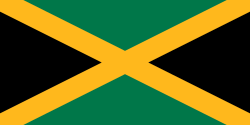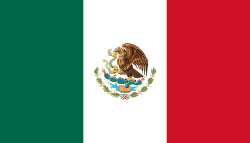Herrarnas fyrmanna i bob vid olympiska vinterspelen 1992
| Bob vid olympiska vinterspelen 1992  | ||||
|---|---|---|---|---|
| Herrar | tvåmanna | fyrmanna | ||
Herrarnas fyrmannabobåkning i vinter-OS 1992 ägde rum i Albertville, Frankrike den 22 februari 1992.
Medaljörer
Resultat
| Placering | Land | Idrottare | Tid |
| Ingo Appelt, Harald Winkler, Gerhard Haidacher, Thomas Schroll | 3:53.90 | ||
| Wolfgang Hoppe, Bogdan Musiol, Axel Kühn, René Hannemann | 3:53.92 | ||
| Gustav Weder, Donat Acklin, Lorenz Schindelholz, Curdin Morell | 3:54.13 | ||
| 4 | Chris Lori, Ken Leblanc, Cal Langford, David MacEachern | 3:54.24 | |
| 5 | Christian Meili, Bruno Gerber, Christian Reich, Gerold Löffler | 3:54.38 | |
| 6 | Harald Czudaj, Tino Bonk, Axel Jang, Alexander Szelig | 3:54.42 | |
| 7 | Mark Tout, George Farrell, Paul Field, Lenox Paul | 3:54.89 | |
| 8 | Christophe Flacher, Claude Dasse, Thierry Tribondeau, Gabriel Fourmigue | 3:54.91 | |
| 9 | Randy Will, Joe Sawyer, Karlos Kirby, Chris Coleman | 3:54.92 | |
| 10 | Gerhard Rainer, Thomas Bachler, Carsten Nentwig, Martin Schützenauer | 3:55.01 | |
| 11 | Charles Leonowicz, Robert Weissenfels, Bryan Leturgez, Jeff Woodard | 3:55.23 | |
| 12 | Pasquale Gesuito, Antonio Tartaglia, Paolo Canedi, Stefano Ticci | 3:55.88 | |
| 13 | Nick Phipps, Edd Horler, Colin Rattigan, David Armstrong | 3:55.91 | |
| 14 | Sandis Prūsis, Juris Tone, Ivars Bērzups, Adris Plūksna | 3:55.92 | |
| 15 | Günther Huber, Marco Andreatta, Thomas Rottensteiner, Marcantonio Stiffi | 3:55.98 | |
| 16 | Zintis Ekmanis, Aldis Intlers, Boriss Artemjevs, Otomārs Rihters | 3:56.72 | |
| 17 | Toshio Wakita, Ryoji Yamazaki, Fuminori Tsushima, Naomi Takewaki | 3:57.24 | |
| 18 | Bruno Mingeon, Stéphane Poirot, Didier Stil, Dominique Klinnik | 3:57.41 | |
| 19 | Oleg Suchorutjenko, Oleksandr Bortiuk, Vladimir Ljubovitsky, Andrej Gorochov | 3:57.43 | |
| 20 | Paul Neagu, Laszlo Hodos, Laurenţiu Budur, Costel Petrariu | 3:57.44 | |
| 21 | Jiří Dzmura, Pavel Puškár, Karel Dostál, Roman Hrabaň | 3:58.55 | |
| 22 | Tsvetozar Viktorov, Dimitar Dimitrov, Jordan Ivanov, Valentin Atanasov | 4:00.59 | |
| 23 | Vladimir Jefimov, Oleg Petrov, Sergej Kruglov, Aleksandr Pasjkov | 4:00.59 | |
| 24 | Zdravko Stojnić, Dragiša Jovanović, Miro Pandurević, Ognjen Sokolović | 4:01.30 | |
| 25 | Dudley Stokes, Ricky McIntosh, Michael White, Chris Stokes | 4:01.37 | |
| 26 | Chen Chin-San, Chen Chin-Sen, Hsu Kuo-Jung, Chang Min-Jung | 4:01.94 | |
| 27 | Alberto II di Monaco, Gilbert Bessi, Michel Vatrican, David Tomatis | 4:02.63 | |
| 28 | Luis Adrián Tamés, Ricardo Rodríguez, Francisco Negrete, Carlos Casar | 4:05.14 | |
| 29 | Sven Petersen, Michael Juhlin, James Withey, Paul Zar | 4:10.35 | |
| - | Daniel Burgner, Ernest Mathias, David Entwistle, Bill Neill | DNF | |
| - | Dennis Marineau, Chris Farstad, Jack Pyc, Sheridon Baptiste | DNF |
Referenser
- ^ ”Bobsleigh at the 1992 Albertville Winter Games: Men's Four” (på engelska). sports-reference.com. Arkiverad från originalet den 20 juni 2016. https://web.archive.org/web/20160620032533/http://www.sports-reference.com/olympics/winter/1992/BOB/mens-four.html. Läst 20 juni 2016.
| |||||
Media som används på denna webbplats
An icon that represents a gold medal
An icon that represents a silver medal
An icon that represents a bronze medal
Kanadas flagga, införd 1965; denna version med Pantone‐nyanser. Nuvarande utformning ersatte den tidigare kanadensiska Red Ensign.
Variant version of a flag of Japan, used between January 27, 1870 and August 13, 1999 (aspect ratio 7:10).
Variant version of a flag of Japan, used between January 27, 1870 and August 13, 1999 (aspect ratio 7:10).
Olympic Movement flag
Proportions 2:3, created 1913, adopted 1914, first used 1920.
- Colors as per http://fairspielen.de/wp-content/uploads/2015/09/Annexe-3-Olympism_and_the_Olympic_Symbol_-_Principles_and_Usages_Guide-1.pdf
- blue: PMS 3005C
- yellow: PMS 137C
- black: PMS 426C
- green: PMS 355C
- red: PMS 192C
- Dimensions of the rings taken from http://fairspielen.de/wp-content/uploads/2015/09/Annexe-3-Olympism_and_the_Olympic_Symbol_-_Principles_and_Usages_Guide-1.pdf
Flag of the Socialist Federal Republic of Yugoslavia (1946-1992).
The design (blazon) is defined in Article 4 of the Constitution for the Republic of Yugoslavia (1946). [1]
Flag of the Socialist Federal Republic of Yugoslavia (1946-1992).
The design (blazon) is defined in Article 4 of the Constitution for the Republic of Yugoslavia (1946). [1]
Flag of Jamaica. “The sunshine, the land is green, and the people are strong and bold” is the symbolism of the colours of the flag. GOLD represents the natural wealth and beauty of sunlight; GREEN represents hope and agricultural resources; BLACK represents the strength and creativity of the people. The original symbolism, however, was "Hardships there are, but the land is green, and the sun shineth", where BLACK represented the hardships being faced.
Chinese Taipei Olympic Flag. According to the official website of Chinese Taipei Olympic Committee, Blue Sky(circle) & White Sun(triangles) above the Olympic rings is neither the National Emblem of the Republic of China, nor the Party Emblem of Kuomintang (KMT), but a design in between, where the triangles do not extend to the edge of the blue circle, as registered at International Olympic Committee in 1981 and digitally rendered in 2013. Besides, the blue outline of the five-petaled plum blossom is broader than the red one. Moreover, the CMYK code of the blue one and the Blue Sky & White Sun is "C100-M100-Y0-K0", and different from the Olympic rings (C100-M25-Y0-K0). Note that it's the only version recognized by IOC.
Pictograms of Olympic sports - Bobsleigh




















